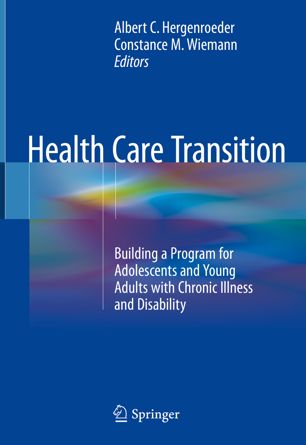

Most ebook files are in PDF format, so you can easily read them using various software such as Foxit Reader or directly on the Google Chrome browser.
Some ebook files are released by publishers in other formats such as .awz, .mobi, .epub, .fb2, etc. You may need to install specific software to read these formats on mobile/PC, such as Calibre.
Please read the tutorial at this link: https://ebookbell.com/faq
We offer FREE conversion to the popular formats you request; however, this may take some time. Therefore, right after payment, please email us, and we will try to provide the service as quickly as possible.
For some exceptional file formats or broken links (if any), please refrain from opening any disputes. Instead, email us first, and we will try to assist within a maximum of 6 hours.
EbookBell Team

4.0
26 reviewsThis comprehensive book thoroughly addresses all aspects of health care transition of adolescents and young adults with chronic illness or disability; and includes the framework, tools and case-based examples needed to develop and evaluate a Health Care Transition (HCT) planning program that can be implemented regardless of a patient’s disease or disability. Health Care Transition: Building a Program for Adolescents and Young Adults with Chronic Illness and Disability is a uniquely inclusive resource, incorporating youth/young adult, caregiver, and pediatric and adult provider voices and perspectives.
Part I of the book opens by defining Health Care Transition, describing the urgent need for comprehensive transition planning, barriers to HCT and then offering a framework for developing and evaluating health care transition programs. Part II focuses on the anatomic and neuro-chemical changes that occur in the brain during adolescence and young adulthood, and how they affect function and behavior. Part III covers the perspectives of important participants in the HCT transition process – youth and young adults, caregivers, and both pediatric and adult providers. Each chapter in Part IV addresses a unique aspect of developing HCT programs. Part V explores various examples of successful transition from the perspective of five key participants in the transition process - patients, caregivers, pediatric providers, adult providers and third party payers. Related financial matters are covered in part VI, while Part VII explores special issues such as HCT and the medical home, international perspectives, and potential legal issues. Models of HCT programs are presented in Part VIII, utilizing an example case study.Representing perspectives from over 75 authors and more than 100 medical centers in North America and Europe, Health Care Transition: Building a Program for Adolescents and Young Adults with Chronic Illness and Disability is an ideal resource for any clinician, policy maker, caregiver, or hospitalist working with youth in transition.